Kamairicha Shibamoto invites you into the aromatic world of matured tea【Kamairicha, Shizuoka Prefecture】
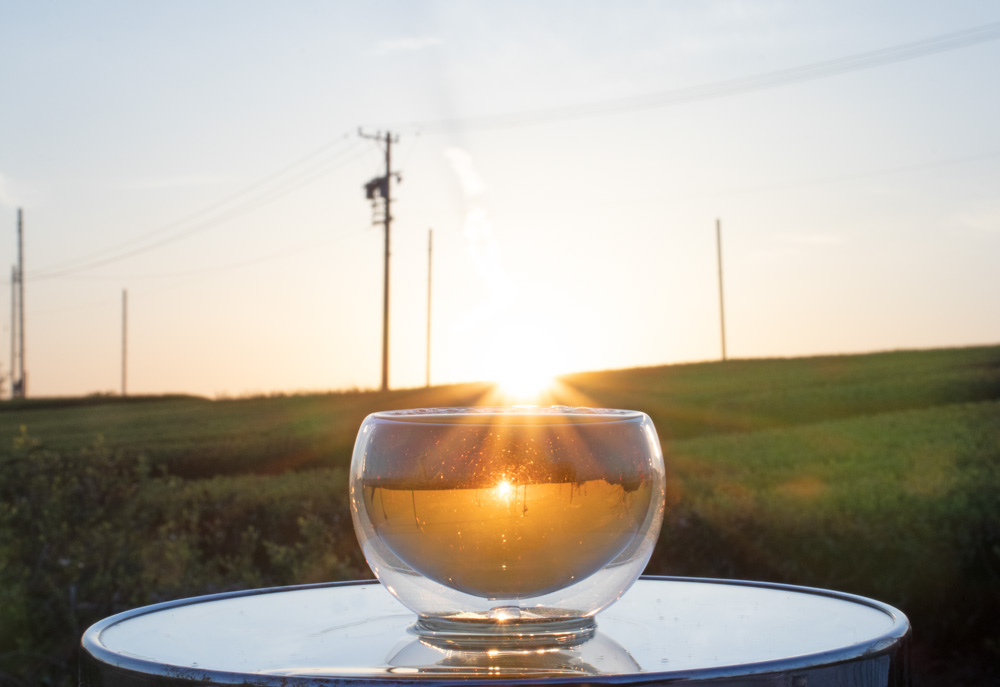
Generally, green tea can be enjoyed at its most popular time of the year during the spring harvest season from April to May. During this period, one can enjoy the vibrant aroma and flavor unique to this prized shincha (new tea). On the other hand, tea leaves that have been matured for a long period of time produce a rich aroma that cannot be found in shincha. These teas are called matured teas. We visited “Kamairicha Shibamoto,” a company engaged in matured tea production to hear about their products. Made combining a kamairicha method from Miyazaki, Kyushu ( the home of kamairicha) and their own aging technique, their tea won the highest gold prize at the Black Tea Grand Prix (this year). It is also exported to Poland, and its high quality is recognized in Japan and abroad.
In this article, we will tell you about our encounter with kettle roasted tea (kamairicha) and the unique charm of matured tea, in an interview with Toshifumi Shibamoto.
Contents
- 1 About Kamairicha Shibamoto
- 2 An Introduction to tea of Kamairicha Shibamoto
- 3 Interview: An Encounter with Kamairicha and the Invitation to the Aromatic World of Matured Teas
- 3.1 In the search for my own style of tea, I was astonished by the charm of kamairicha.
- 3.2 Tea of Shibamoto born in the back and forth between Miyazaki and Shizuoka
- 3.3 Matured Mikkocha (Honey Fragrance Tea) wins the All Japan Black Tea Grand Prix
- 3.4 A high degree of difficulty and lack of replicability makes the world of matured teas a challenging one. That is why it is so interesting.
- 3.5 The world beyond making tea to please people. The dream of building a bridge to an unknown world.
- 4 Information of Kamairicha Shibamoto
About Kamairicha Shibamoto
Kamairicha Shibamoto is a tea farm in Makinohara City, Shizuoka Prefecture, Japan. They produce mainly kamairicha, a unique type of tea that accounts for less than 1% of the total tea produced in the country. The current owner of the farm is Toshifumi Shibamoto. The Shibamoto family has been a landowner in the Katsumata area for generations.
His great-grandfather, Gisaburo, was the head of a cooperative consisting of five households called the ㊄ (Marugo) Agricultural Products Processing Cooperative. Following the postwar agrarian reform, his grandfather Zituo started business as a tea farmer, and Toshifumi Shibamoto is the third generation of this family.
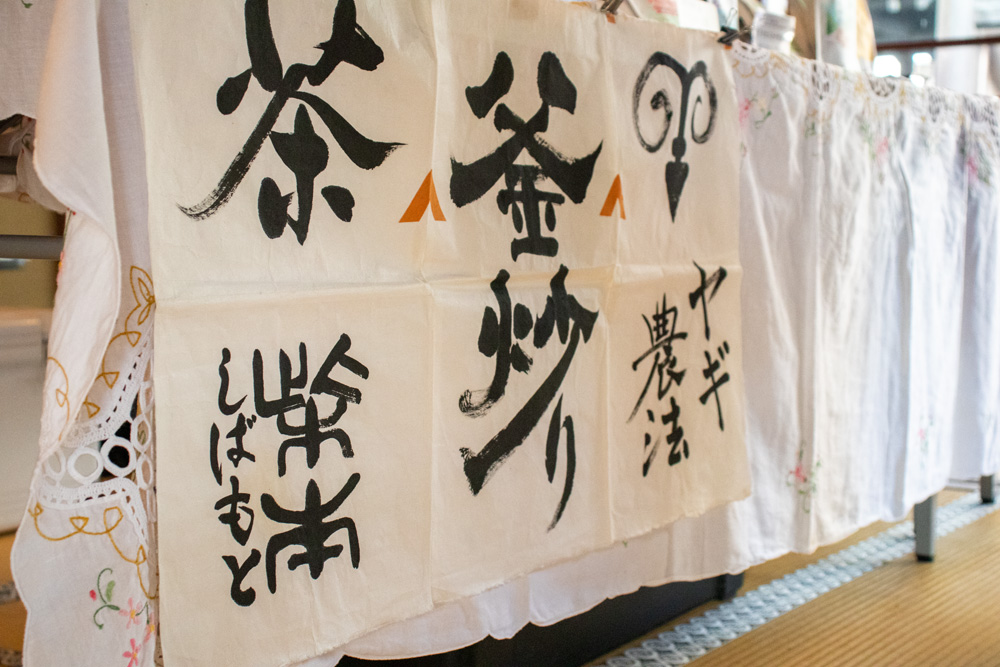
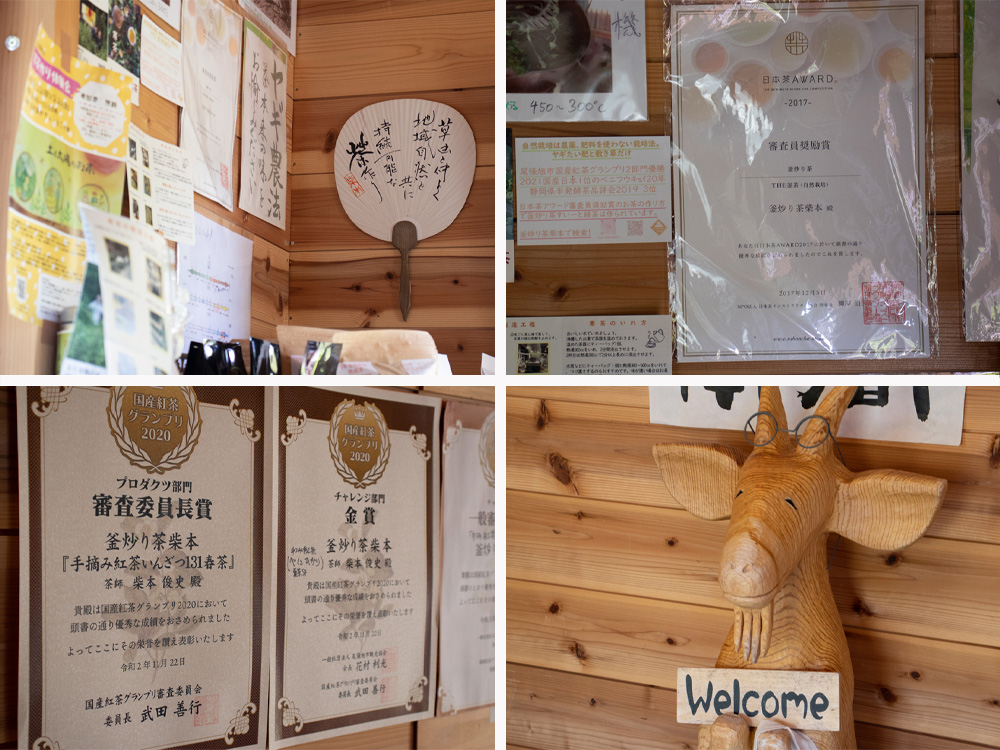 ▲Kamairicha Shibamoto is a new brand launched by Toshifumi Shibamoto, the third generation owner of the farm.
▲Kamairicha Shibamoto is a new brand launched by Toshifumi Shibamoto, the third generation owner of the farm.
Reflecting their ethos of coexistence with nature in the production of their aromatic teas, the farm is fertilizer and pesticide-free. The goats that walk between the rows eat the weeds in the tea garden, which provide habitat for insects, returning as compost after digestion as food for the microorganisms. Shibamoto calls this cyclical farming method “goat farming”.
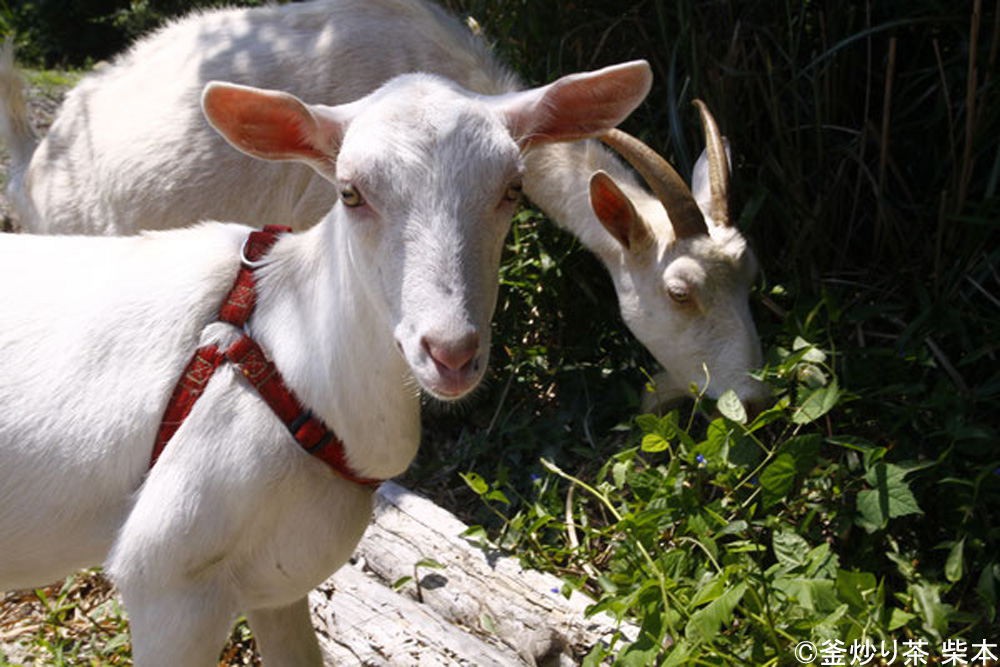
An Introduction to tea of Kamairicha Shibamoto
Kamairicha Shibamoto specializes in the production of kamairicha tea, in which freshly picked leaves are roasted in a round kettle at a high temperature. The tea is characterized by its clear water color, gorgeous aroma, and refreshing aftertaste. The company also produces a wide variety of teas, including matured green tea, oolong tea, black tea, white tea, and flowering tea, all of which are made by preserving tea leaves for a long period of time. All of their teas can be purchased on their online store, at Daichi no Chanoma, and at the Makinohara City Tourism Center “Yotteke-ichi”. Their teas are highly regarded overseas, and are even exported to Poland. Shibamoto himself has been to Poland four times and is planning activities to further promote tea abroad.
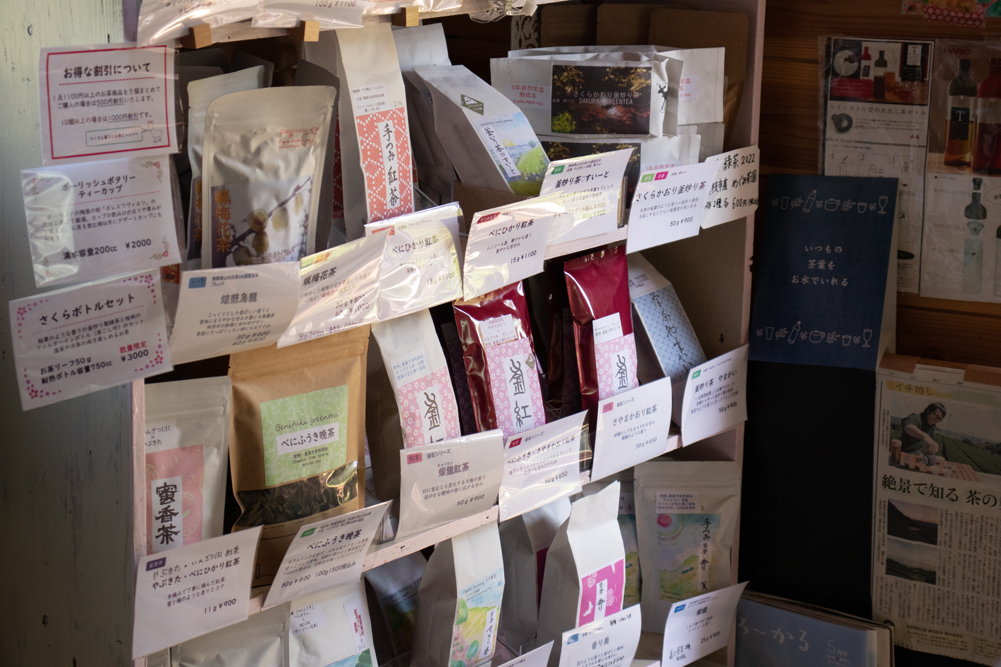
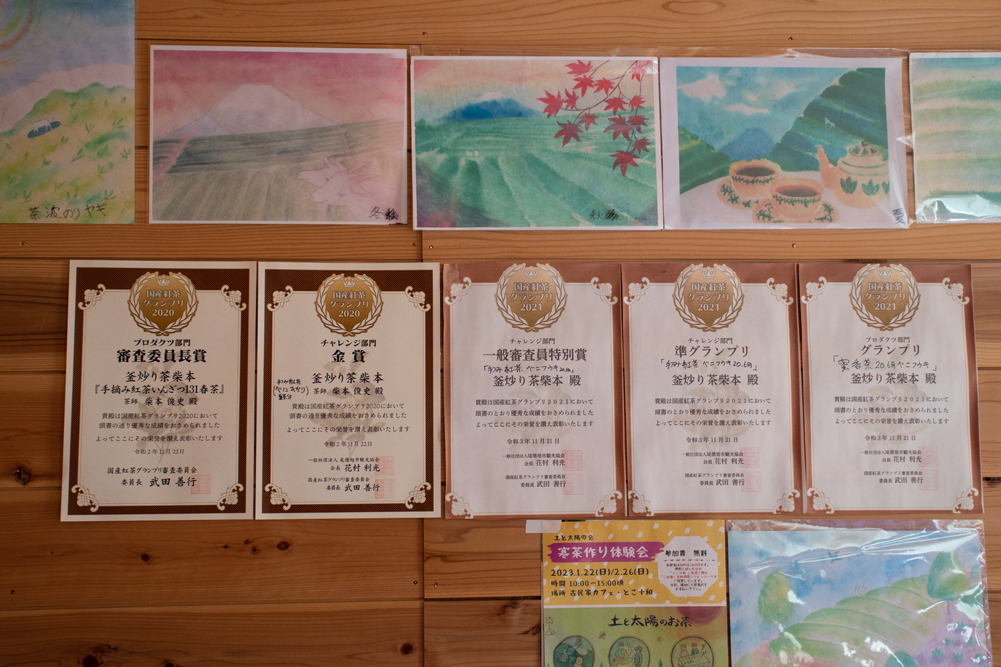 ▲Kamairicha Shibamoto has received many awards, including the highest award in the Product Category of the All Japan Black Tea Grand Prix 2021.
▲Kamairicha Shibamoto has received many awards, including the highest award in the Product Category of the All Japan Black Tea Grand Prix 2021.
Mikkocha (Honey Fragrance Tea) – Benifuki Black Tea
Leaves are carefully harvested by hand and roasted after a year of maturation to bring out a sweet and refreshing aroma of muscato grapes. Their recommended method is to brew a strong pot and cool it down, to enjoy like in champagne glasses for an exciting moment.
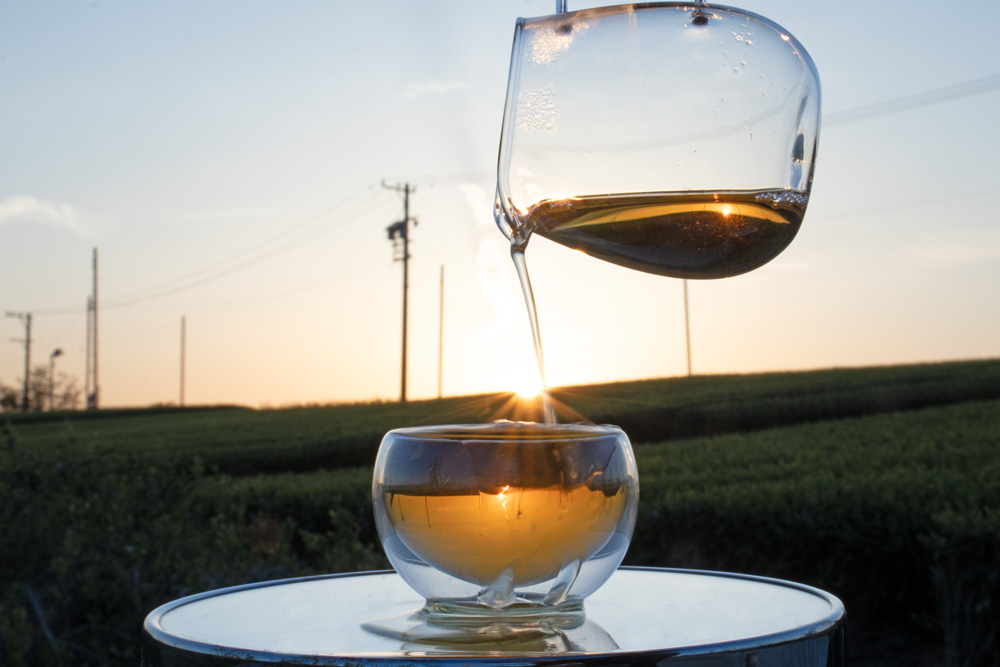
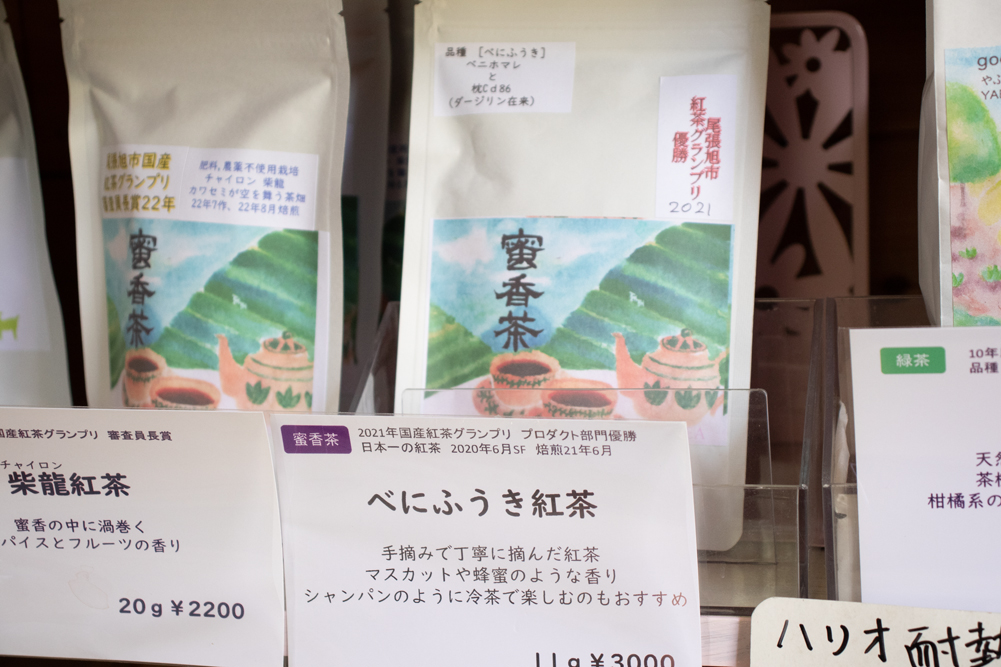
Six Year Matured Fragrant White Tea
Tea leaves are dried after harvesting and stored in six years at room temperature in a chabako(special lined container) to mature. The resulting infusion has notes of brandy. It can be easily brewed with boiling water, and enjoyed in multiple infusions.
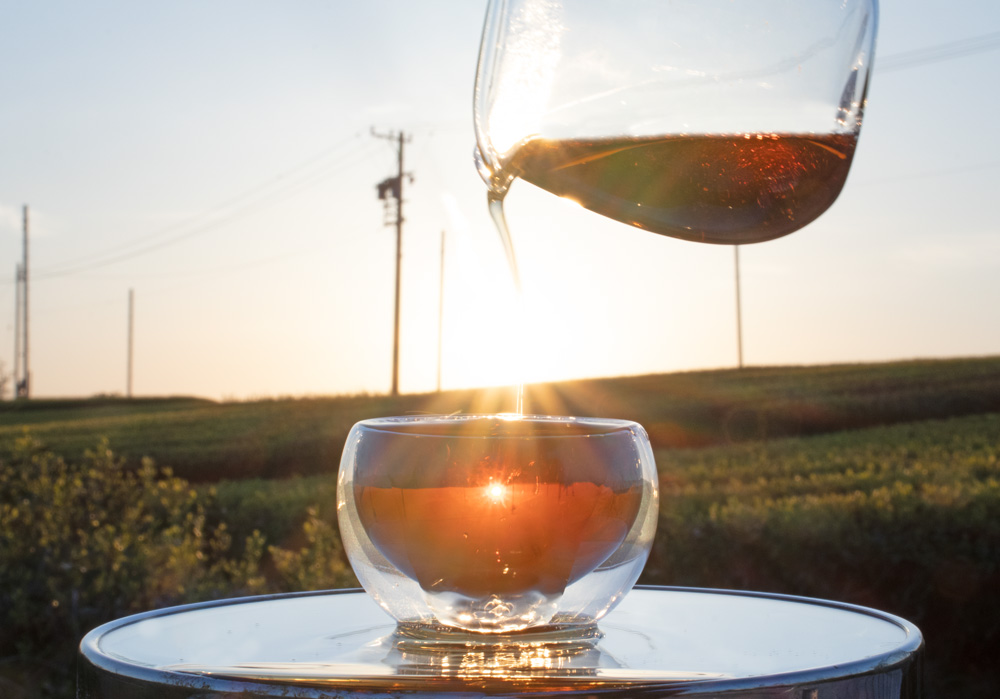
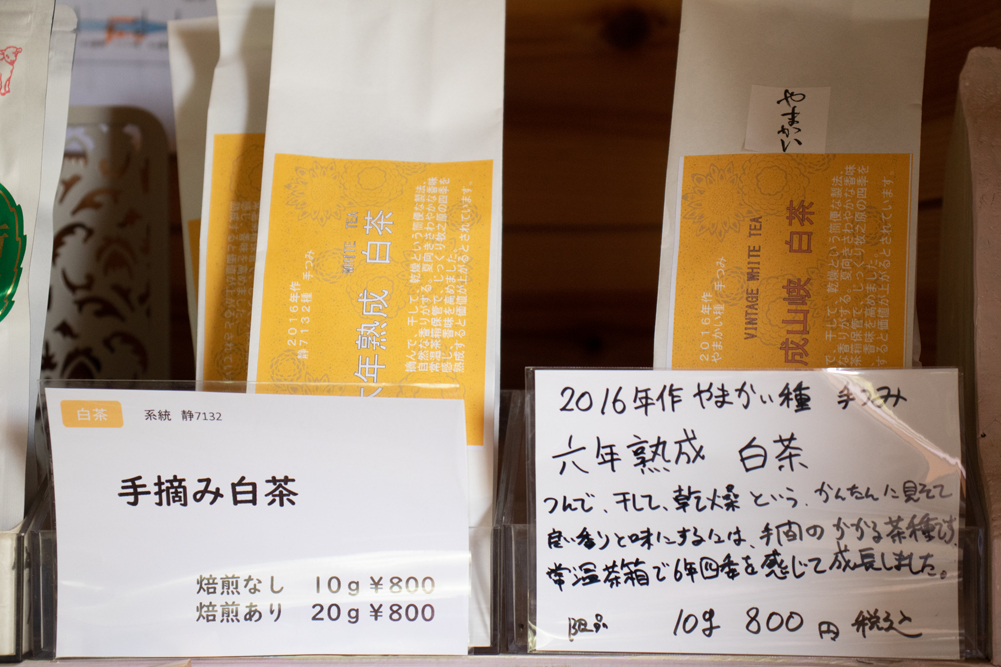
Chairon
This oolong tea has a deep flavor with a milky and spicy aroma. Shibalong (Chinese reading is Chai Long) is made with Shibamoto’s own original cultivar. This tea is recommended for those who appreciate teas like Taiwan’s Frozen Summit Oolong tea.
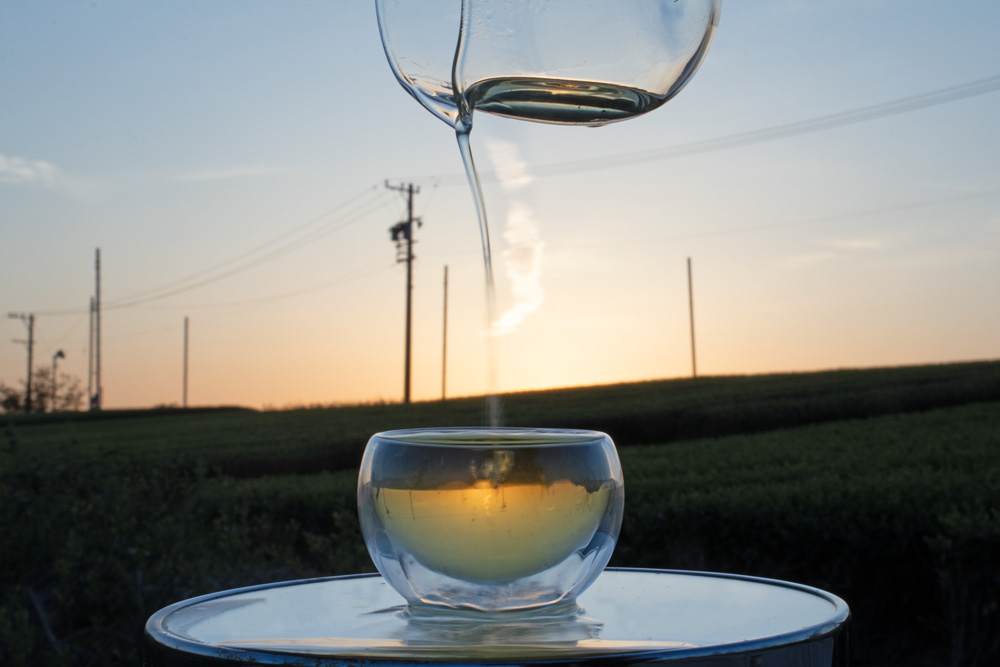
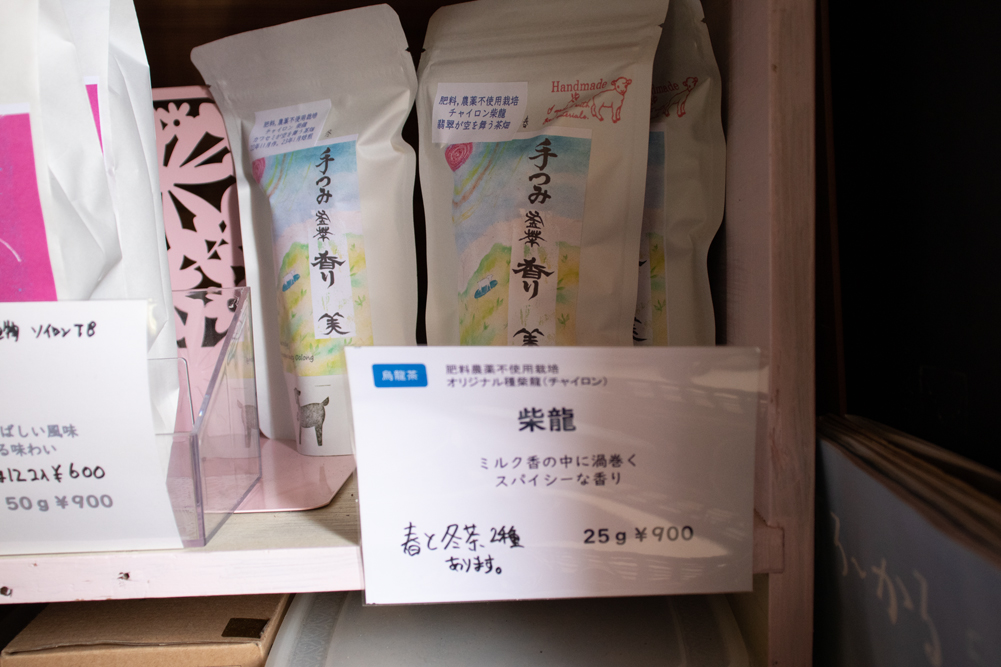
Kamairicha Sweet
This kettle-fired green tea is a blend of cultivars Yabukita and Shizu 7132. One can enjoy a fresh taste with a slight aroma of cherry leaves. It is a perfect match with rich dishes. It is recognized as one of Shizuoka’s 100 Famous Mountain Teas.
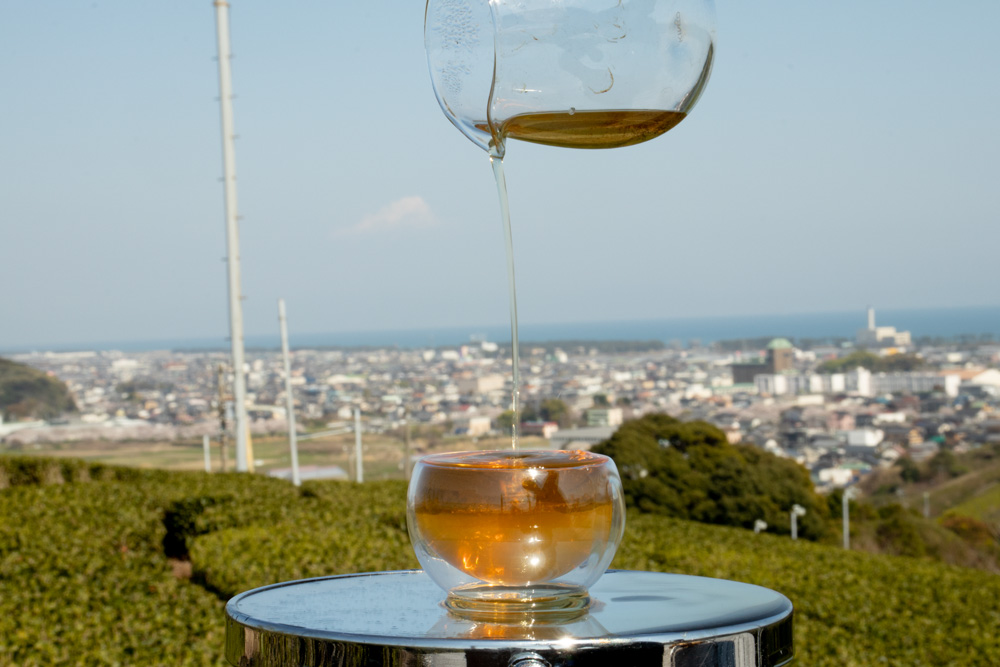
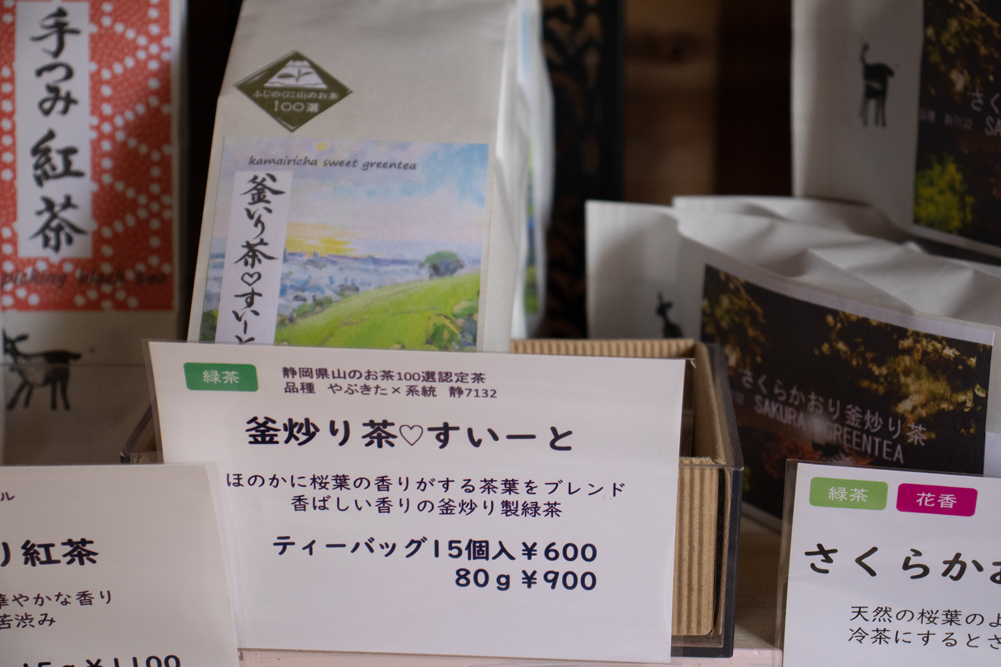
Interview: An Encounter with Kamairicha and the Invitation to the Aromatic World of Matured Teas
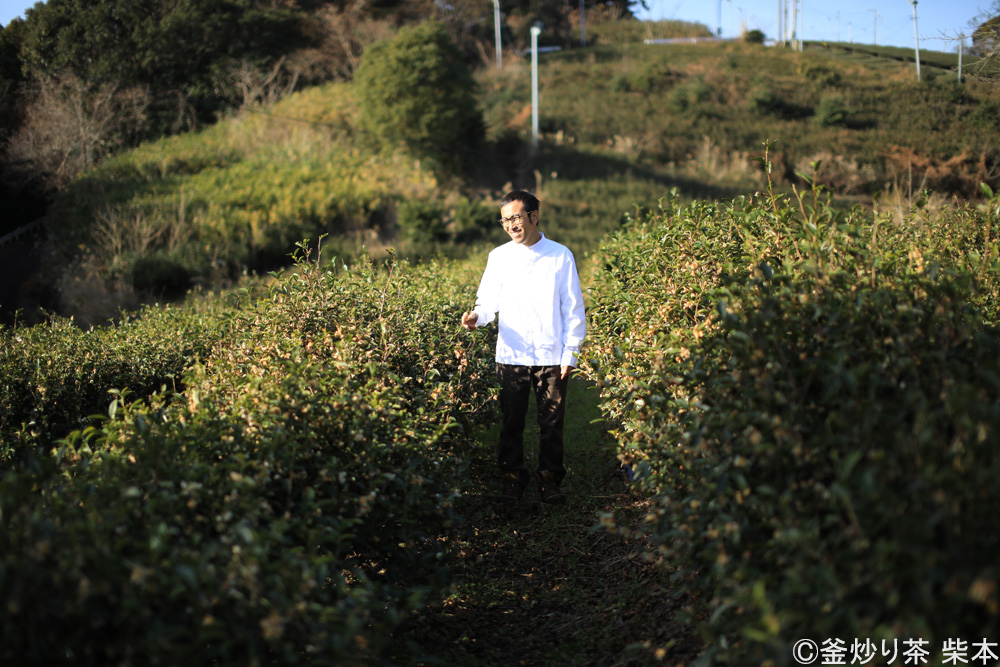
We interviewed Toshifumi Shibamoto, owner of Kamairicha Shibamoto.
In the search for my own style of tea, I was astonished by the charm of kamairicha.
–What made you want to make kamairicha?
There are many ways to sell tea. Among them, if I were to name one sure-fire method, I would say that it is to “make an flavorful tea that draws out the individual elements of the variety, and to serve it politely to the customer.” In fact, tea is often sold in this way. However, apart from that, I wanted to find my own unique way of making and promoting tea.
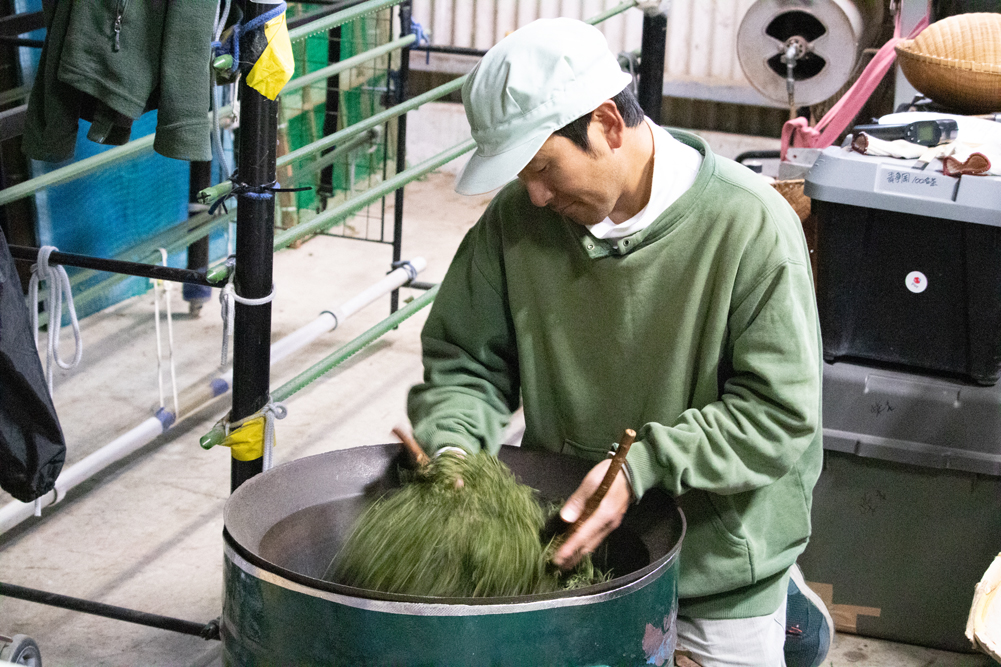
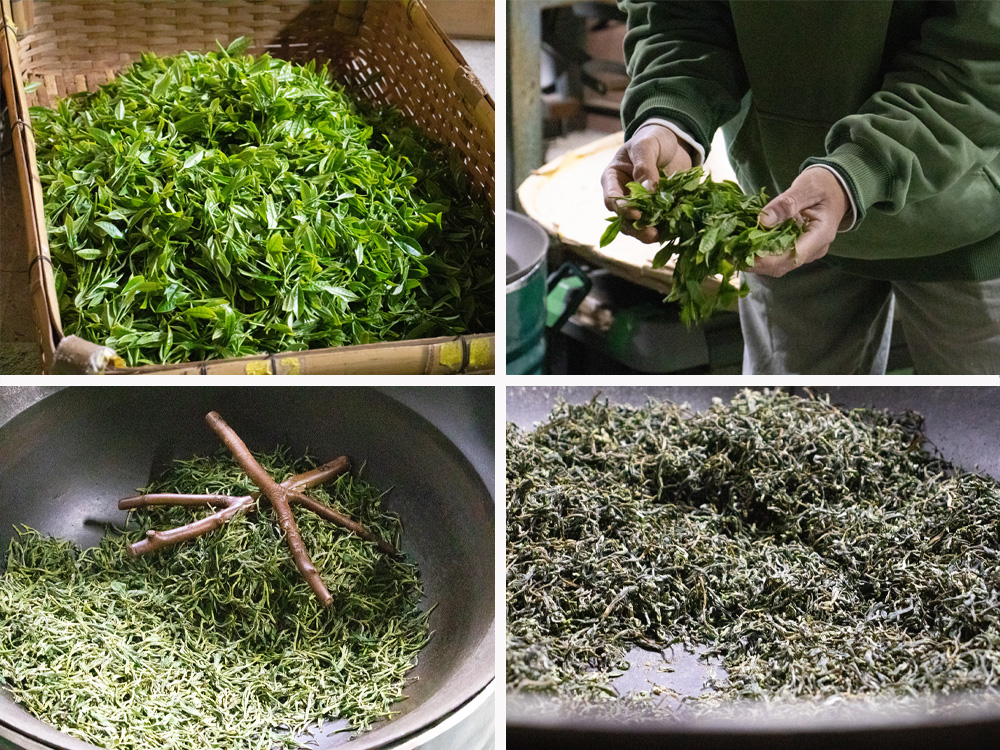
After researching many different other types of tea, I first encountered kamairicha when I was in high school. I wanted to know more about it, so I called the late Mrs. Seiji Ogawa, who was active as a teacher of the Aoyanagi-style. Mrs. Ogawa took the trouble to come to my high school club and carefully taught me everything from the history of kamairicha to how to brew it. It was a truly inspiring moment for me at that time (laughs).
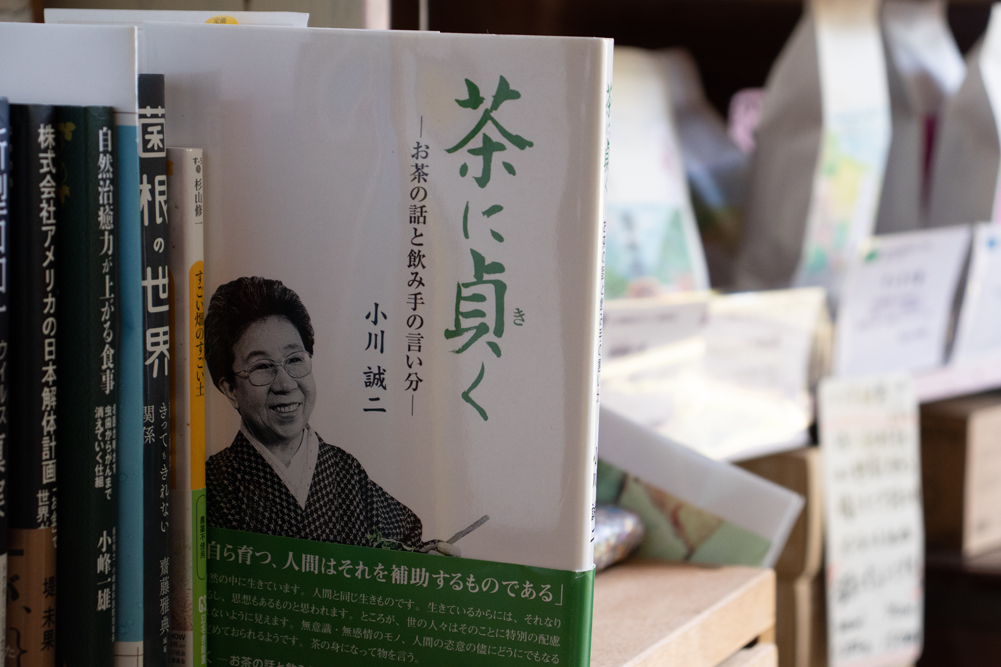 ▲Shibamoto’s store has a copy of the late Seiji Ogawa’s book (in Japanese) “Cha ni Kiku” (Asking too deeply for tea).
▲Shibamoto’s store has a copy of the late Seiji Ogawa’s book (in Japanese) “Cha ni Kiku” (Asking too deeply for tea).
After serving kamairicha in the manner I learned under Mrs. Ogawa’s guidance to friends and neighbours, they all loved it. Even people in the tea business were surprised at how delicious it was! (Laughs). For some reason, it was difficult to obtain tea like this in Shizuoka. I began to wonder if there wasn’t something I could do about the situation.
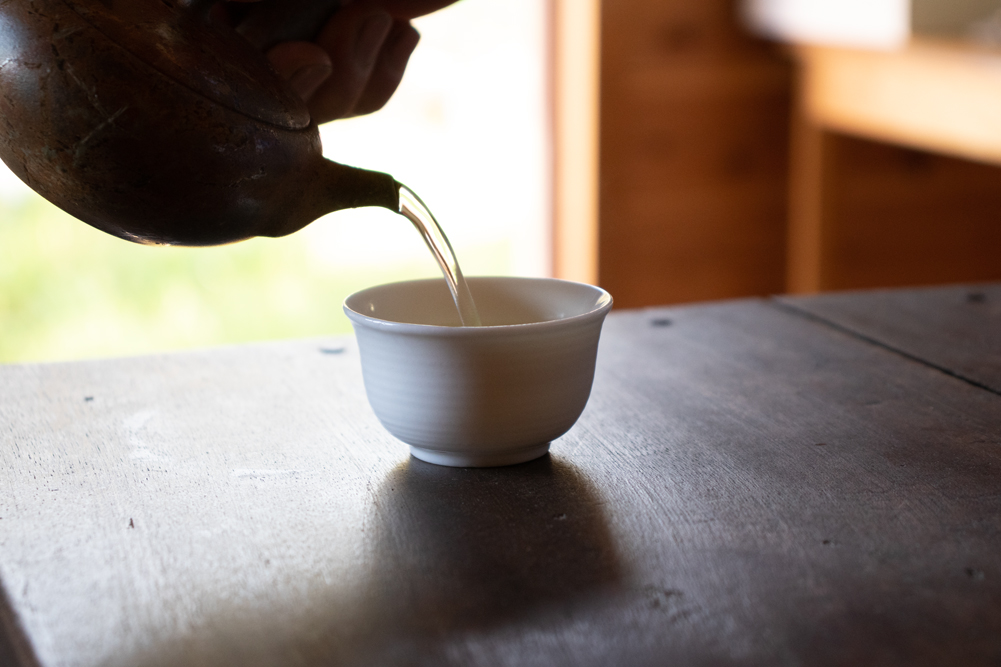
–When you were in high school, had you already decided to pursue a career in tea making?
Yes. My former school, Ogasa High School in Kikugawa, has a plantation, a processing facility, expert lecturers, and specialist books to enable students to learn about tea, from classroom lectures to practical application. It is a very favorable environment for those aspiring to become tea growers. After graduating from high school, I decided to pursue my career in Miyazaki, the home of kamairicha.
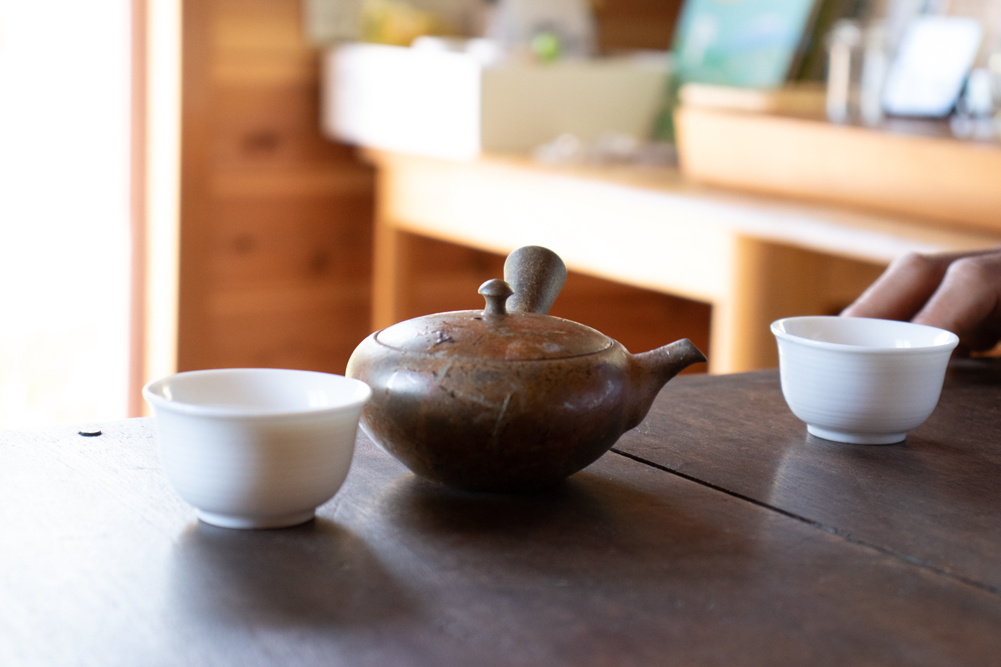
Tea of Shibamoto born in the back and forth between Miyazaki and Shizuoka
Before going to Miyazaki, I studied at the Tea Research Center in Shizuoka for two years where I learned more about the current situation and background of Shizuoka’s tea industry. I thought that a deeper understanding of the current situation and background of Shizuoka’s situation would enable me to look at Miyazaki’s tea in comparison and gain deeper insight into the tea industry.
The knowledge I obtained at the Tea Research Center helped me a lot in my discussions with the tea growers in Miyazaki.
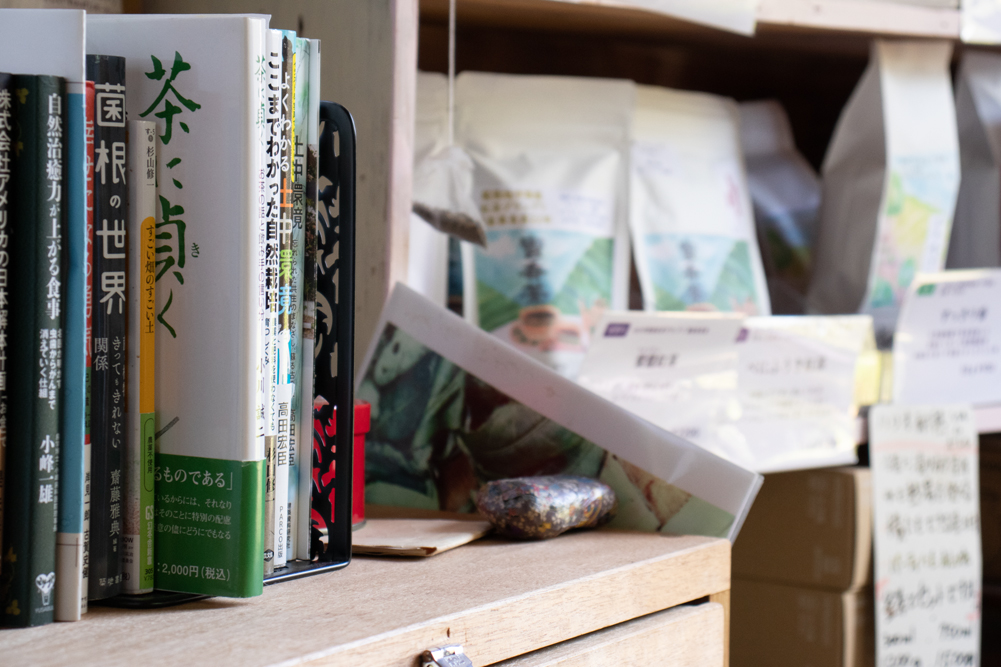
After living and working in Miyazaki for two and a half years learning the art of kamairicha, I returned to Shizuoka. Since then, traveling back and forth between Miyazaki and Shizuoka, I have established my own way of making the most of the individuality and charm of our kamairicha. Looking back, I have been making tea for more than 20 years now.
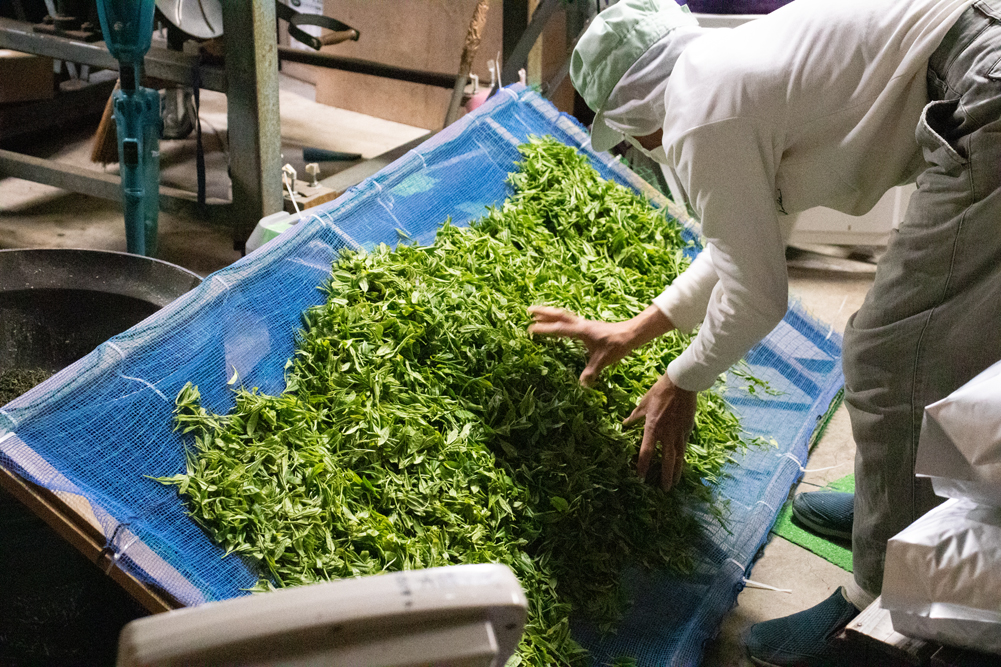
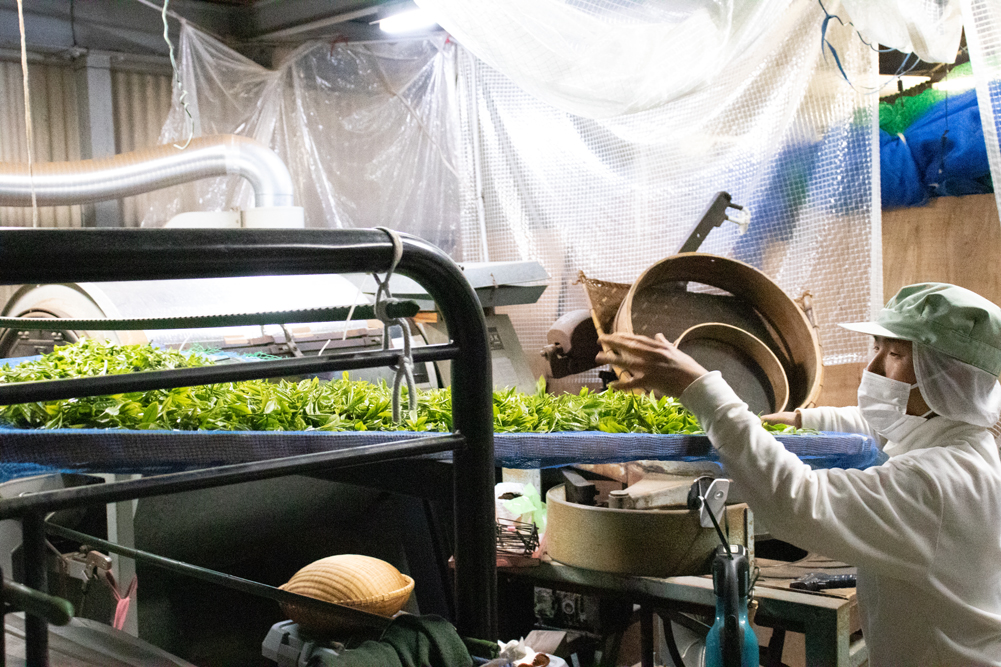
–How did you start making matured teas?
There was a time when I was drinking all kinds of teas for the sake of my tea-making. One day, I drank a tea I had made about four years ago and was astonished at how good it tasted. That was the moment I discovered the potential of matured tea.
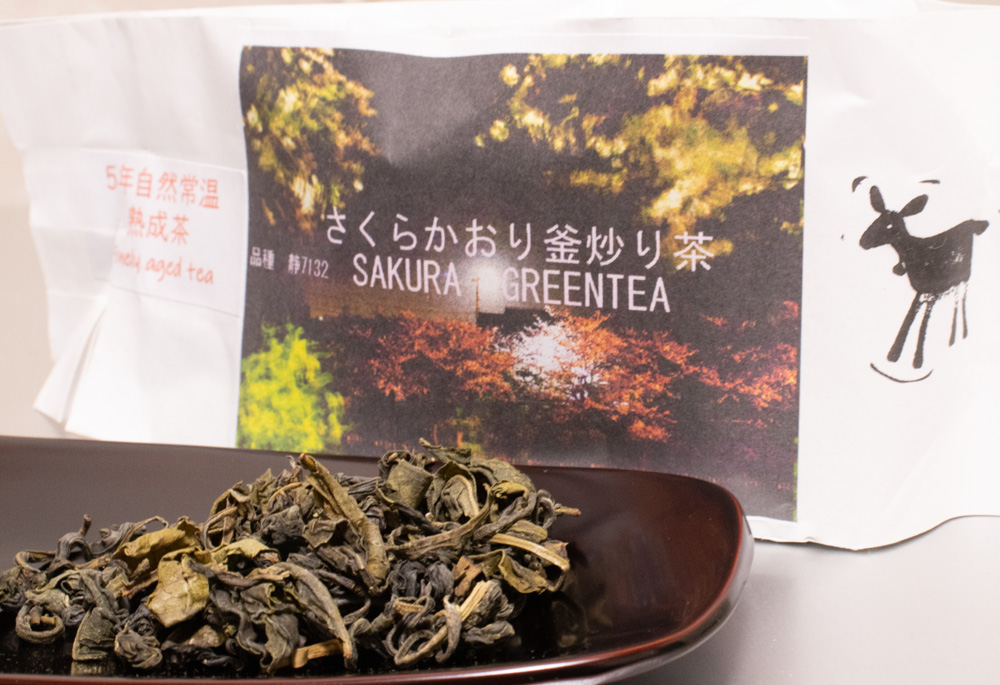 ▲5 Years Matured Kamairicha ‘Sakura Kaori’
▲5 Years Matured Kamairicha ‘Sakura Kaori’
Matured Mikkocha (Honey Fragrance Tea) wins the All Japan Black Tea Grand Prix
The world of maturing tea is truly profound. In order to make a high quality matured tea, you need to return to the cultivation process and design the plantation meticulously.
The tea that won the All Japan Black Tea Grand Prix in 2021, “Mikkocha (Honey Fragrance Tea)- Benifuuki,” has a one-year maturation period integrated into the production process. Therefore, the tea leaves we use were picked from the fields in June 2020. As it is a high value-added tea that has gone through the aging process, we cannot offer it at a low price. However, if you drink it, we believe you will understand why.
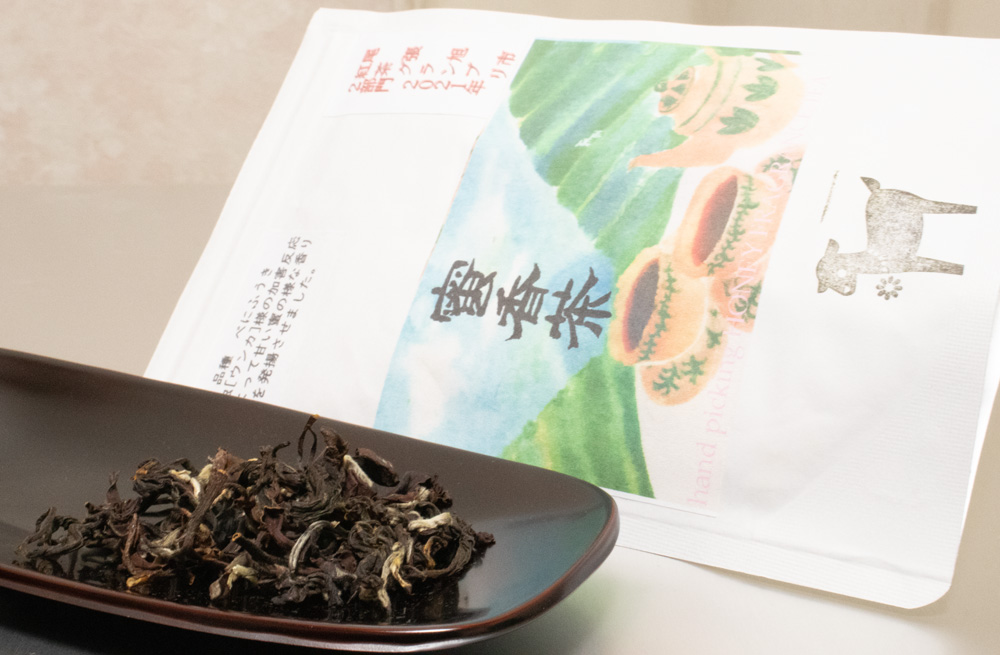
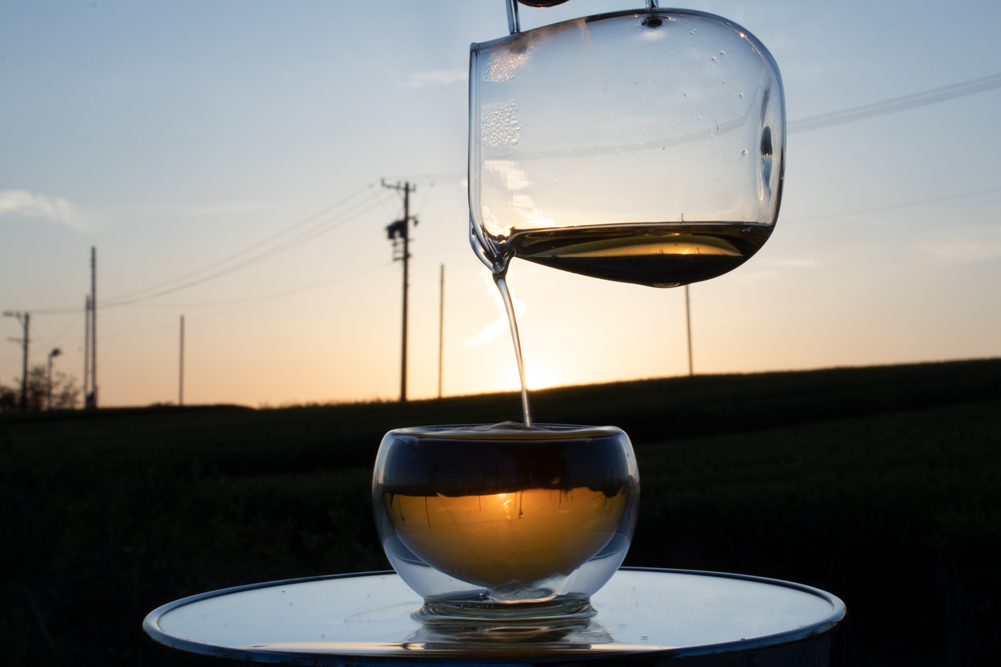
–Very nice aroma. It is refreshing and easy to drink. Does aging tea produce this kind of flavor?
It is imperative to identify suitable materials for maturing. Generally speaking, shincha is often designed to be fresh and delicious with a good balance of aroma and flavor. In this case, aging may have a negative effect. However, if the tea is designed to be delicious after a year or two, aging will likely have a positive effect.
–So you’re saying that not all teas are suitable for maturing.

A high degree of difficulty and lack of replicability makes the world of matured teas a challenging one. That is why it is so interesting.
–Is it difficult to make a tea with the same taste if there is a maturing process?
It is a difficult process that requires time and effort. The least reproducible of all the Shibamoto Kamairicha teas is the matured white tea, which requires six years to mature.
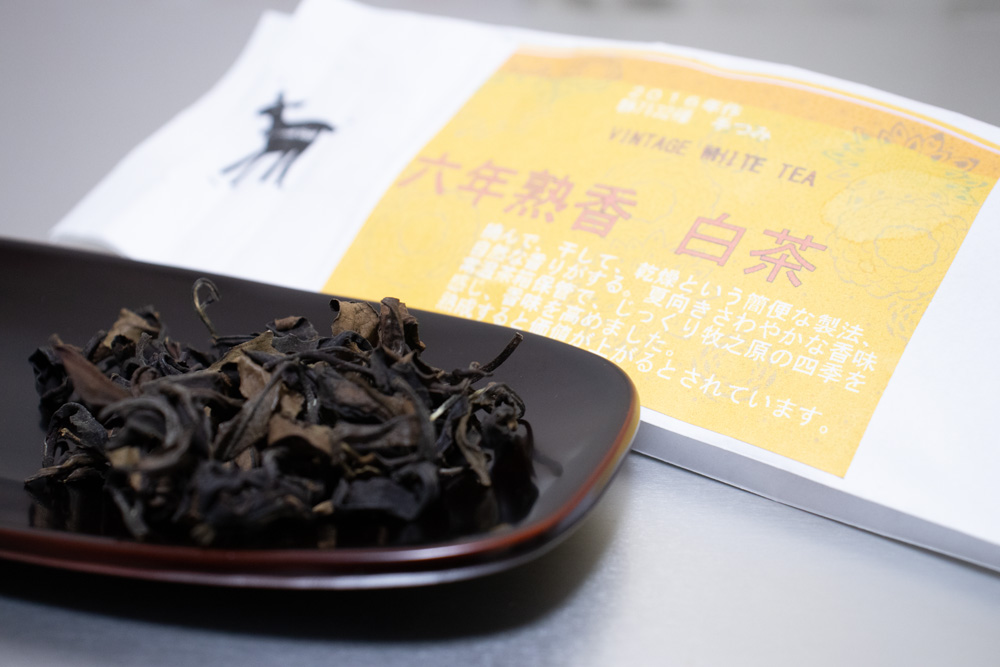
The problem is not just that it takes a long time to mature. We need to be prepared to be proactive enough to start working on it as soon as you think of it, otherwise we will not be able to achieve the desired results. .
As for black tea, its not even possible to make it unless the natural environment in which tea green leafhoppers can thrive is in place. We have no choice but to work patiently and in harmony with nature. (*In the hot and humid summer season, an insect about two millimeters long called a leafhopper lives on the tea plant and nibbles on the leaves. The tea leaves nibbled by the insects are chemically altered by enzymes to produce a sweet taste called mikko( Honey Fragrance ) in Japanese. This is how the rare raw material for black tea, the “leafhopper bud tea leaf,” is produced.)
–You grow so many varieties of tea, is this also a necessary measure in the production of matured teas?
There are many cultivars with unique characteristics that can be best developed through maturation. If we were to explore the possibilities in tea varieties that are not yet widely known, the number of plantations we would have to manage would exceed our capacity.
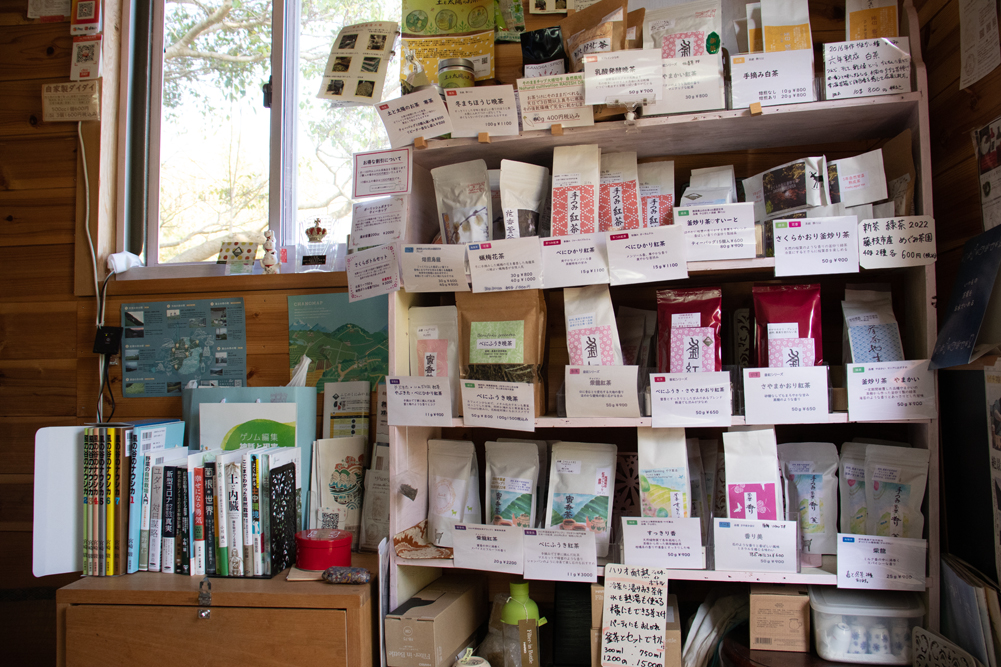
The aroma of a single black tea varies depending on multiple factors such as the variety, producer, production method, and environment. Within these boundaries, I would urge you to find a tea that you like, and then try the matured version of it. The aroma of the tea changes as it matures. Experiencing that will open up a world of enjoyment as you guess the vintage of other teas.

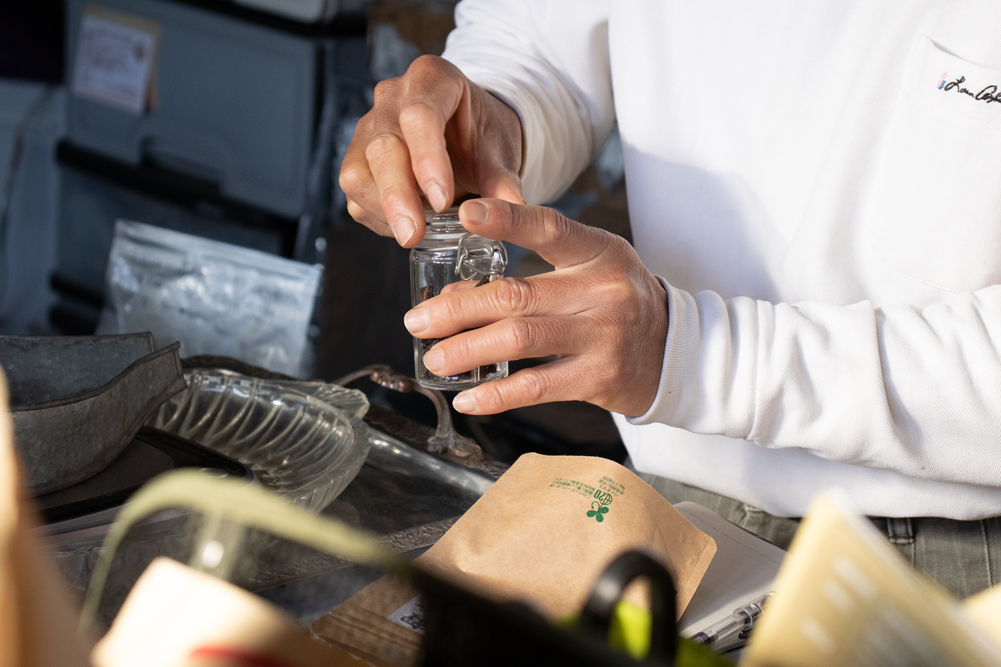
The world beyond making tea to please people. The dream of building a bridge to an unknown world.
–I get the impression that you have a strong desire for people to ‘enjoy tea’ rather than in making it.
There was a time when I was not focused on pleasing others, but just devoted to making my own ideal tea. One day I realized that the more important thing was to make tea to please someone else.
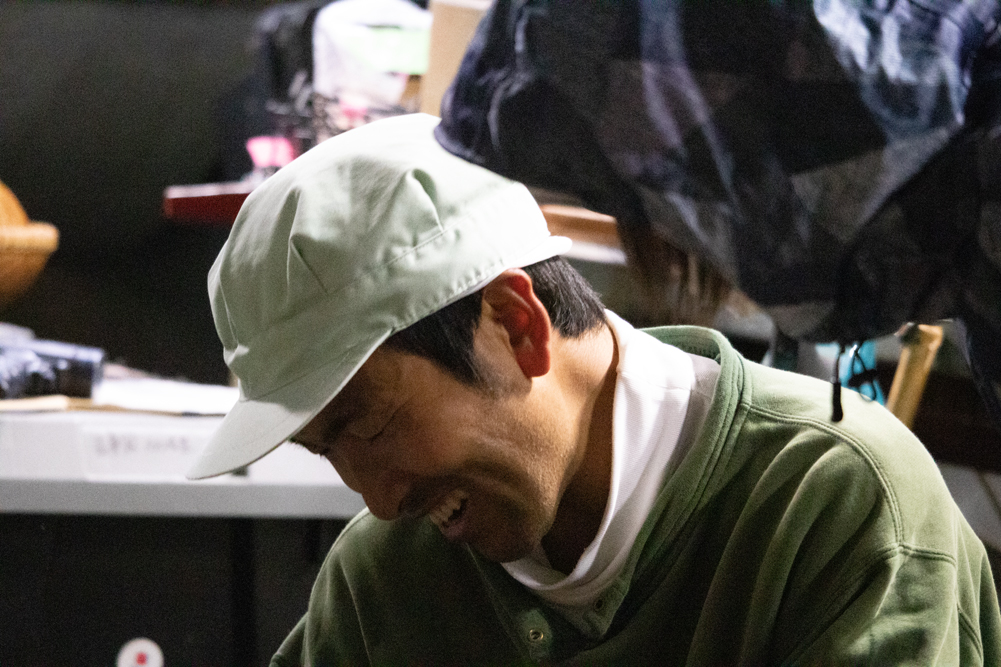
I realized that I needed to start out with marketing and making teas that the public wants. In this way I can invite them in to the world of tea and start a conversation.
We make black tea and oolong tea because these popular teas are available to the public. As we have accumulated know-how in cultivation and manufacturing methods, we are now able to produce teas that can be arranged in a way that is unique to Shibamoto teas and that will please our customers.These days I enjoy this work tremendously.
But to tell the truth, I still want to challenge myself to create and popularize amazing teas that are still unknown.
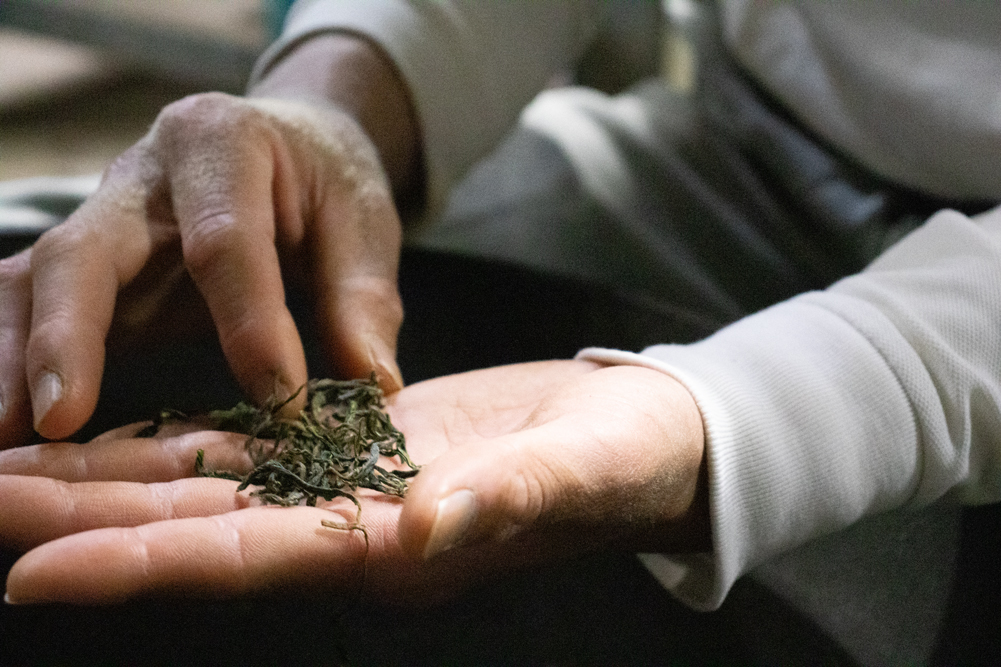
The world of tea is vast. There are still possibilities in the future that is not yet known. As our know-how accumulates, we will see that we the production of wonderfully fragrant tea depends greatly on the surrounding environment.
Eventually I would like to play a role in making a bridge to such a world. Maybe right now I’m in preparation for that dream.
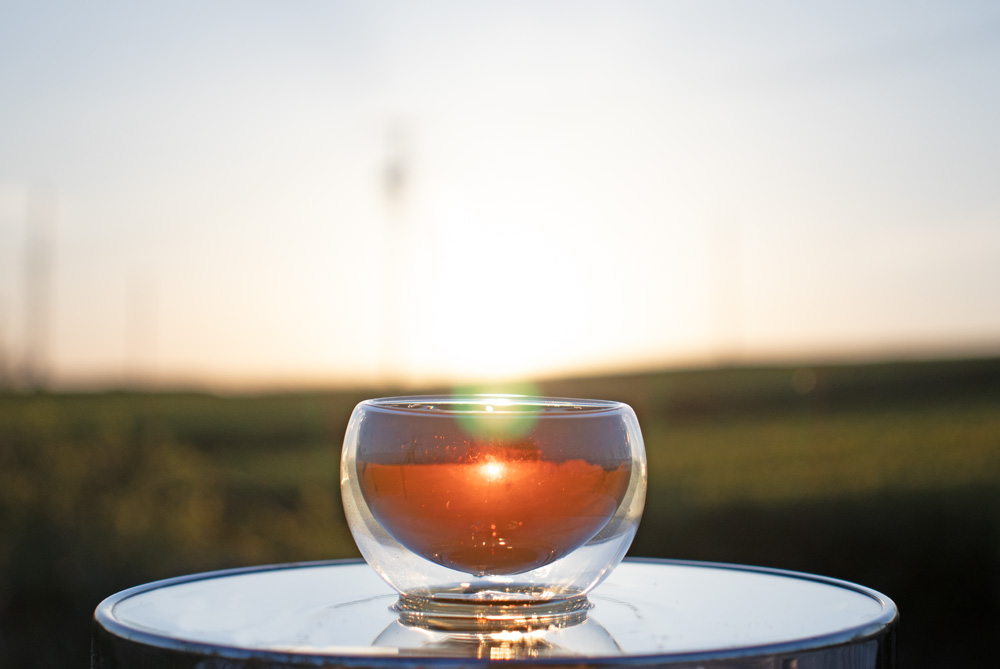
Related articles : Taste the Terroir of the tea-producing region Makinohara at Daichi no Chanoma【Makinohara City, Shizuoka Prefecture】
Information of Kamairicha Shibamoto
| Address | 2695 Katsumata, Makinohara, Shizuoka 421-0414, Japan |
| Website | https://kamacha.jimdofree.com/ |
| Phone number | 080-5295-7196 |
| E-money and credit cards | Partially e-money available |
| Open | 10:00~17:00 (Subject to change depending on the time of year) |
| Closed | non-scheduled holiday |
| Parking lot | A small number of parking spaces are available. |
| Access | 20 minutes by car from Tomei Sagara Makinohara IC, 10 minutes walk from Shibamoto-san’s house, the reception area, to the teahouse. |
| Writer | Norikazu Iwamoto |
| Career | Ochatimes chief editer. Meeting with Vice Governor of Shizuoka prefecture. Judge of Shizuoka 100 tea’s award in 2021~23. Ocha Times link introduced at website of World O-CHA(Tea) Festival 2022, Tea Science Center, The City of Green Tea Shizuoka, Ministry of Agriculture, Forestry and Fisheries. |
| English translator | Calfo Joshua |
| Career | Born and raised in England, living in Japan since 2016. Studying arboriculture in Shizuoka Prefecture whilst operating his landscape business Calfo Forestry. Appreciating the nature of Japan and the culture that places such importance in it. |


 Go to Japanese page
Go to Japanese page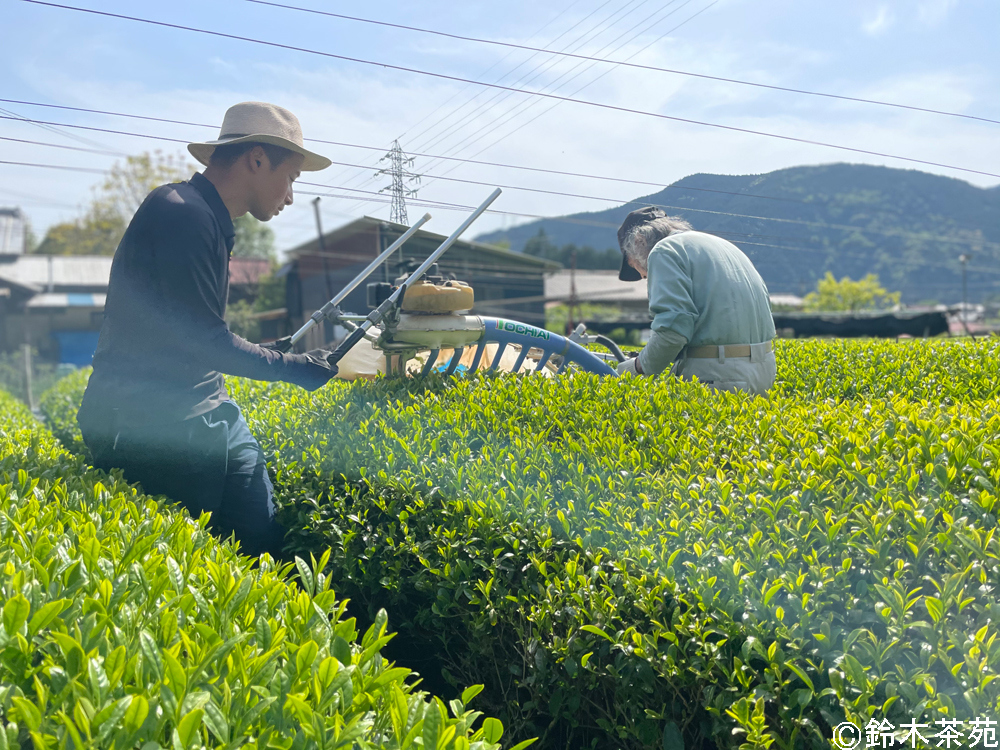
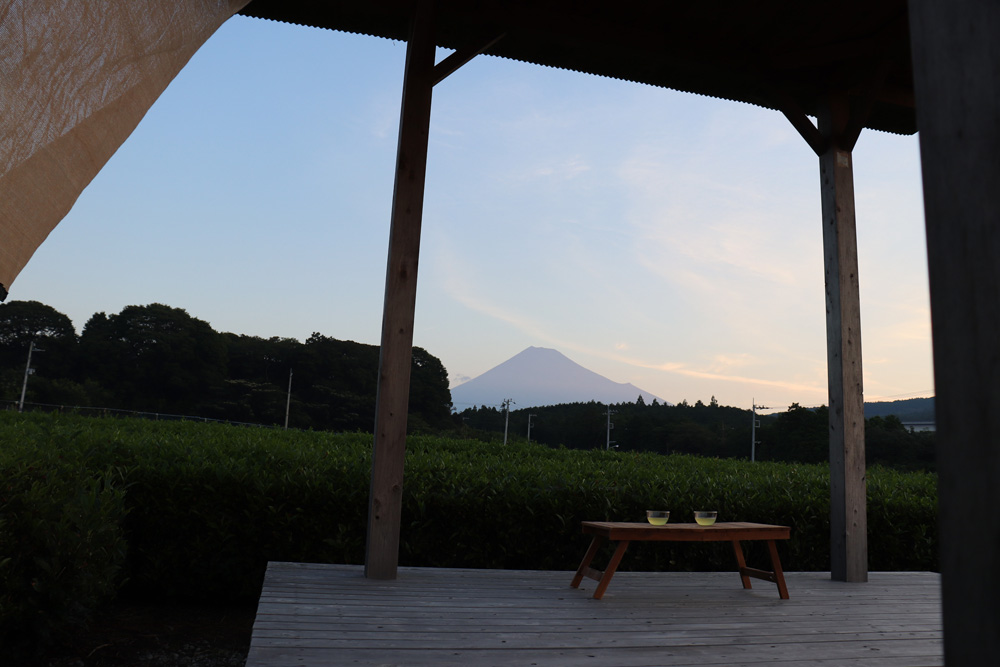
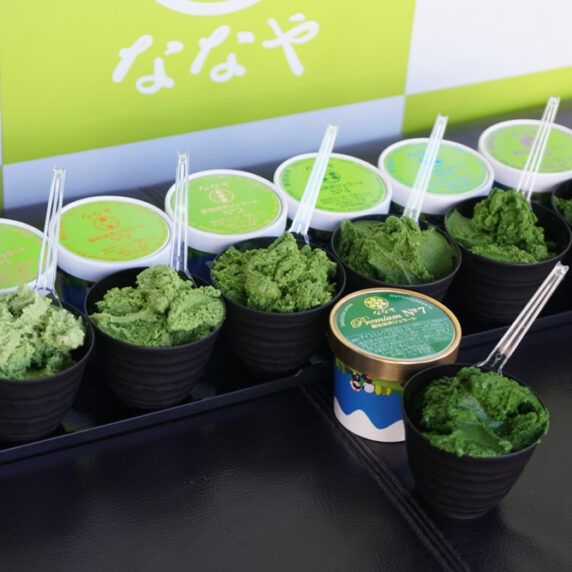
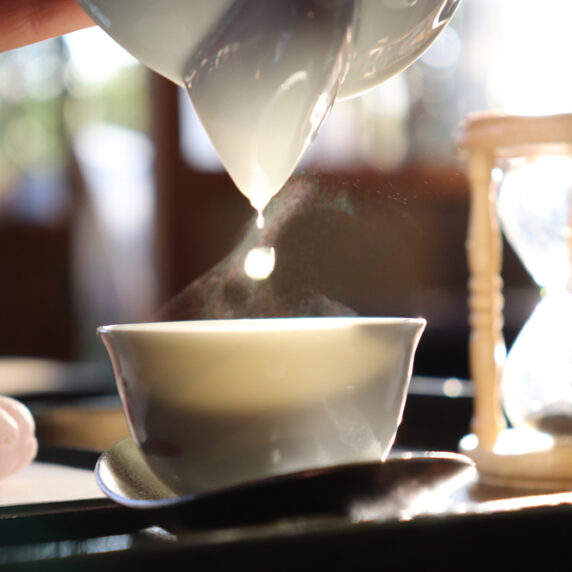
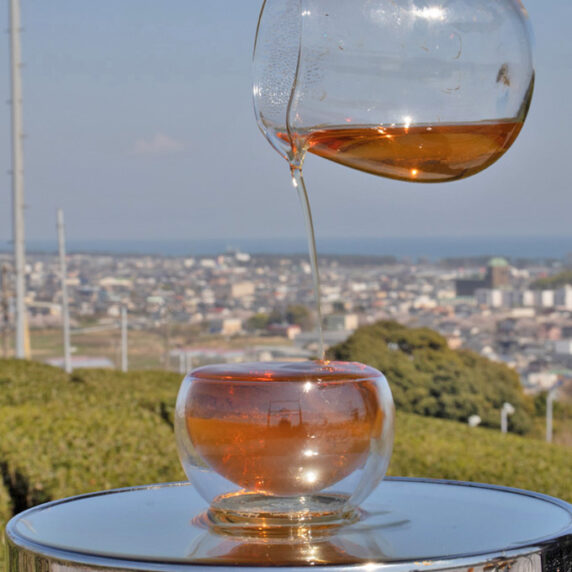
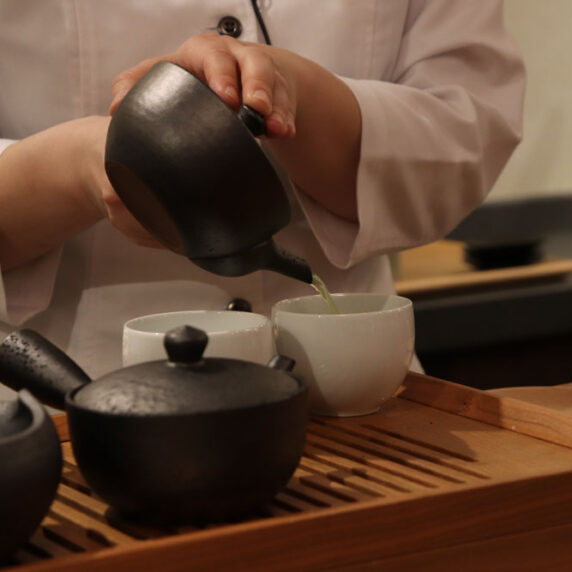
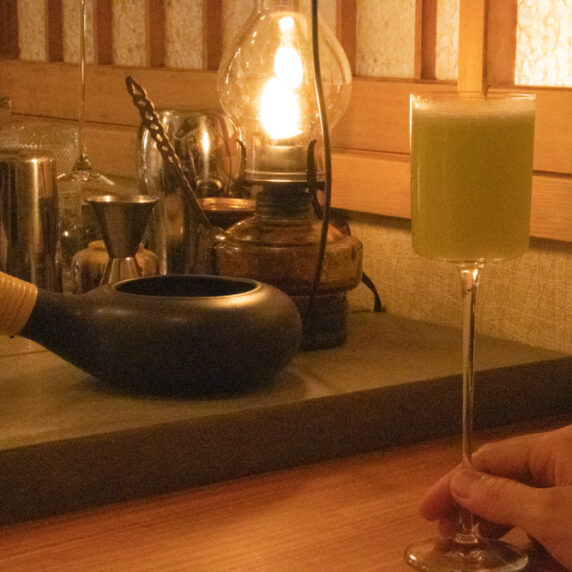




 on the red bar to close the slide.
on the red bar to close the slide. to see the distance between the current location to the Chaya.
to see the distance between the current location to the Chaya.